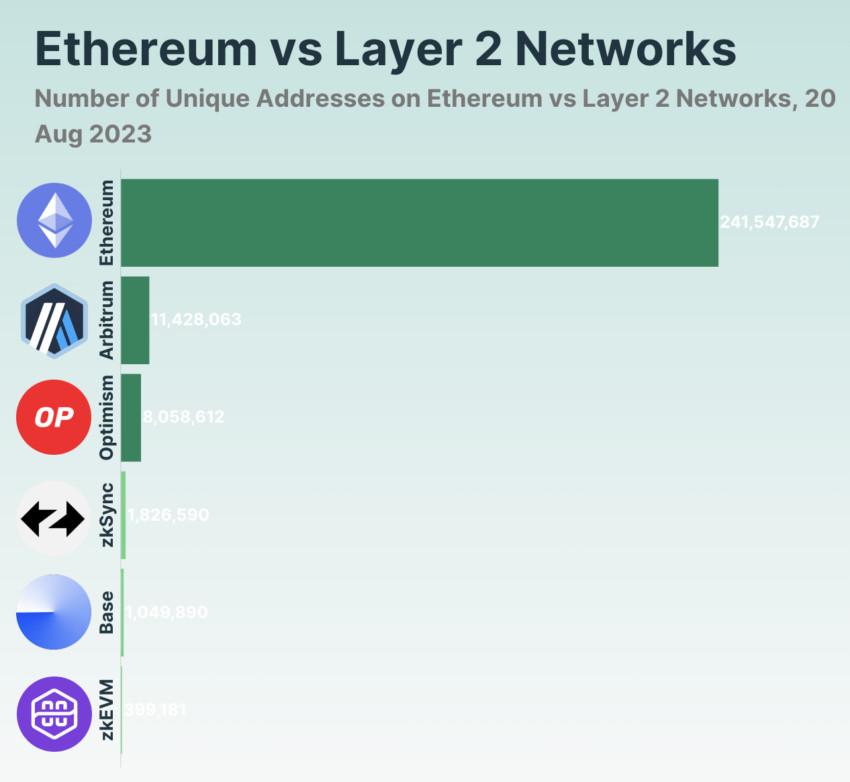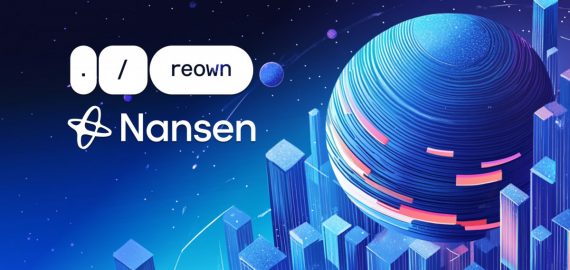Layer 1 and Layer 2: A Heated Discussion on the Future of Blockchain Scalability
In Brief
The blockchain sector, which initially flourished on foundational Layer 1 networks like Bitcoin and Ethereum, is currently undergoing a transformative phase with the advent of Layer 2 technologies aimed at solving scalability issues and enhancing functionality.

Initially, the blockchain landscape revolved around pioneering Layer 1 blockchains like Bitcoin and Ethereum. Over time, the ecosystem has expanded with a myriad of additional Layer 1 initiatives that promise to deliver scalability, innovation, and decentralization. Still, amidst this rapid growth, concerns about the actual viability and utility of many of these new L1 projects have surfaced in an increasingly crowded market.
Understanding the Role and Evolution of Layer 1 Blockchains
Layer 1 blockchains serve as the fundamental building blocks of blockchain networks, enabling the creation of decentralized applications (dApps) across various protocols. The rise of influential L1 chains like Ethereum and Bitcoin paved the way for the diverse array of L1 offerings we see today, each one claiming to tackle the critical challenges of decentralization, security, and scalability. New L1 ventures often tout unique solutions to enhance transaction speed and reduce costs.
Jack O’Holleran, co-founder of Skale Labs, emphasizes the clustering of market efforts, noting that despite the expansion within the L1 ecosystem, very few projects have gained substantial traction in the commercial space. He argues that launching a new L1 blockchain alone isn't enough to attract ongoing interest or user engagement in such a competitive and resource-demanding landscape.
Are New Layer 1 Chains Making the Ecosystem Too Complex?
There are concerns emerging regarding the proliferation of L1 blockchains complicating the ecosystem. Developers and users might find it hard to navigate the fragmented nature of the market caused by new L1 introductions, each bringing unique tokens, experiences, and distinct protocols. O’Holleran points out that many new L1 projects struggle to gain momentum and rely on tactics like airdrops to attract users, often without achieving consistent growth or substantial market presence.
The increasing number of L1 platforms adds layers of complexity to interoperability and liquidity. As new chains emerge, they may disrupt the flow of assets across existing platforms, complicating the user experience.
For instance, certain L1 blockchains may inadvertently siphon off liquidity from other platforms while aiming to resolve specific scalability issues. This fragmentation makes it challenging for users to move through various chains to access assets and apps, often resorting to third-party bridges that introduce potential security vulnerabilities, resulting in a less cohesive market.

The natural competition within the Layer 1 domain can inadvertently stifle innovation. Instead of enhancing existing platforms, the focus often shifts towards creating the next revolutionary blockchain, resulting in a scenario where new projects may quickly capture initial excitement but struggle to maintain relevance against established giants like Ethereum.
Why Ongoing Development of Layer 1 is Necessary for Innovation
Despite these challenges, several experts in the field believe that the ongoing emergence of new Layer 1 blockchains is crucial for driving innovation. Charles Wayn, co-founder of both Galxe and Gravity, argues that the development of new L1 chains is a natural progression within blockchain, offering developers opportunities to tackle specific challenges faced by more conventional blockchains. With a focus on cross-chain communication, Wayn's company recently launched Gravity, a dedicated L1 solution aimed at enhancing scalability.
Wayn notes that newer L1 projects can provide lower costs and increased transaction speeds, addressing issues like congestion and high fees that older platforms face. Moreover, many recent L1 blockchains incorporate advanced technologies like Zero-Knowledge Proofs to boost security and privacy, thereby addressing niche needs often overlooked by traditional L1 models.
New L1 initiatives, such as Gravity, aim to fill the gaps left by general-purpose blockchains like Ethereum by concentrating on specialized functionalities or applications. Wayn argues that by focusing on specific capabilities, developers can create applications tailored to niche markets, thereby increasing the adaptability of the ecosystem. While these specialized blockchains may appeal to a smaller audience at first, their concentrated effort on particular features allows them to cater more effectively to specialized demands compared to larger general-purpose L1 platforms.
Layer 2 Solutions: A Good Substitute?
In the ongoing discussion regarding new Layer 1 blockchains, Layer 2 solutions are steadily gaining traction as a viable alternative for tackling scalability issues. Operating on top of existing Layer 1s, L2 solutions enhance the functionalities of these networks without necessitating the creation of an entirely new chain. Matt Katz, co-founder and CEO of Caldera, advocates for L2 solutions, viewing them as a pragmatic and robust method for addressing scaling challenges minus the complications associated with adding more L1 chains to the mix.

Examples of L2 solutions, such as rollups and state channels, relieve the main chain of some transactional and computational pressures. This reduction facilitates lower costs and improved transaction speeds without compromising security. Katz's firm offers a “rollup-as-a-service” model enabling developers to quickly establish Ethereum L2 chains, sidestepping the hurdles tied to building a standalone blockchain while providing flexibility and scalability.
Katz further underscores the interoperability advantage of L2 approaches over new L1 chains. Unlike most L1 blockchains, L2 solutions are designed for seamless integration with their parent chains, significantly mitigating the risk of liquidity fragmentation. This characteristic allows them to leverage the security and liquidity of existing chains without the need for independent bridges. Katz emphasizes that this improves the overall user experience, creating a more cohesive and accessible ecosystem with fewer barriers to asset transfer between different chains.
Is There a Compromise for the Industry?
The blockchain sector faces a pivotal moment as both Layer 1 and Layer 2 solutions provide distinct benefits and challenges. On one hand, Layer 1 blockchains deliver essential security and decentralization—serving as the groundwork for decentralized applications and protocols. On the other hand, Layer 2 solutions present a practical way to enhance scalability without wading into the complexities of developing new, standalone blockchains.
O’Holleran believes that the market will naturally filter out weaker Layer 1 chains, leaving only those that truly deliver value. He envisions that this self-regulating environment could reduce fragmentation and streamline the marketplace. Meanwhile, Wayn advocates for a flexible and dynamic development space, arguing that innovation shouldn't be stifled by the introduction of additional L1 chains. Katz, for his part, believes that the rise of Layer 2 solutions can help declutter the blockchain landscape by mitigating the push for more Layer 1s.
Disclaimer
In line with the Trust Project guidelines Please be aware that the information shared on this webpage does not constitute legal, tax, investment, or financial advice. It's crucial to only invest what you can afford to lose, and it's recommended to seek independent financial guidance if you have any uncertainties. For more details, we encourage you to check the terms and conditions as well as the help and support sections provided by the issuer or advertiser. MetaversePost remains committed to delivering accurate and impartial reporting, though market conditions may change without prior notice.







